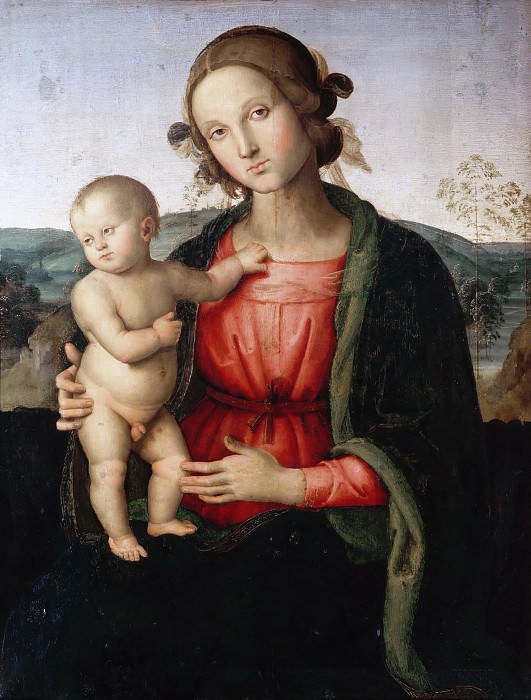Madonna and Child Pietro Perugino (1445-1523)
Pietro Perugino – Madonna and Child
Edit attribution
Download full size: 2850×3764 px (2,6 Mb)
Painter: Pietro Perugino
Location: Borghese gallery, Rome (Galleria Borghese).
Pietro Perugino is a Renaissance artist. We know almost nothing about the great painter’s early years. The painter’s real name is Pietro Vannucci. Perugino is his nickname, which he was awarded for his residence - the city of Perugia. The artist’s main feature is considered to be his ability to convey all compositional rhythms smoothly, the lyricism of landscape backgrounds. In the collection of Perugino’s works there is a large number of paintings depicting the Madonna.
Description of the painting "Madonna" by Pietro Perugino
Pietro Perugino is a Renaissance artist. We know almost nothing about the great painter’s early years. The painter’s real name is Pietro Vannucci. Perugino is his nickname, which he was awarded for his residence - the city of Perugia. The artist’s main feature is considered to be his ability to convey all compositional rhythms smoothly, the lyricism of landscape backgrounds.
In the collection of Perugino’s works there is a large number of paintings depicting the Madonna. The Madonna depicts the Virgin Mary with the Child. He uses a fine contour line of dots to depict the halo above her head. The ornament at the collar of her dress is also painted with a fine contour. Other variations are known today.
Perugino often depicted the Madonna and Child in a variety of versions. In Germany there is a painting in the collection where the infant is depicted sitting on the Madonna’s knee. In a collection that is kept in Italy, the infant is standing on her left knee. The infant’s pose, where he stands on the knee of the Virgin, is the most common among artists. It was repeated many times by Perugino’s pupils and followers in their works.
Characteristic of Perugino’s canvases are elongated figures, with little grace. Their head is often gently bowed on the shoulder. The face is filled with sentimentality. The artist tries to use a symmetrical principle of construction in the images on the altar, in which the central part is always given to the Madonna, and the saints are depicted in the lower part of the altar.
The painter went down in the history of art as Raphael’s mentor.
Кому понравилось
Пожалуйста, подождите
На эту операцию может потребоваться несколько секунд.
Информация появится в новом окне,
если открытие новых окон не запрещено в настройках вашего браузера.
You need to login
Для работы с коллекциями – пожалуйста, войдите в аккаунт (open in new window).


![Pietro Perugino - Nativity [Workshop]](http://cdn.gallerix.asia/j/P/1528142620/7311.webp)














You cannot comment Why?